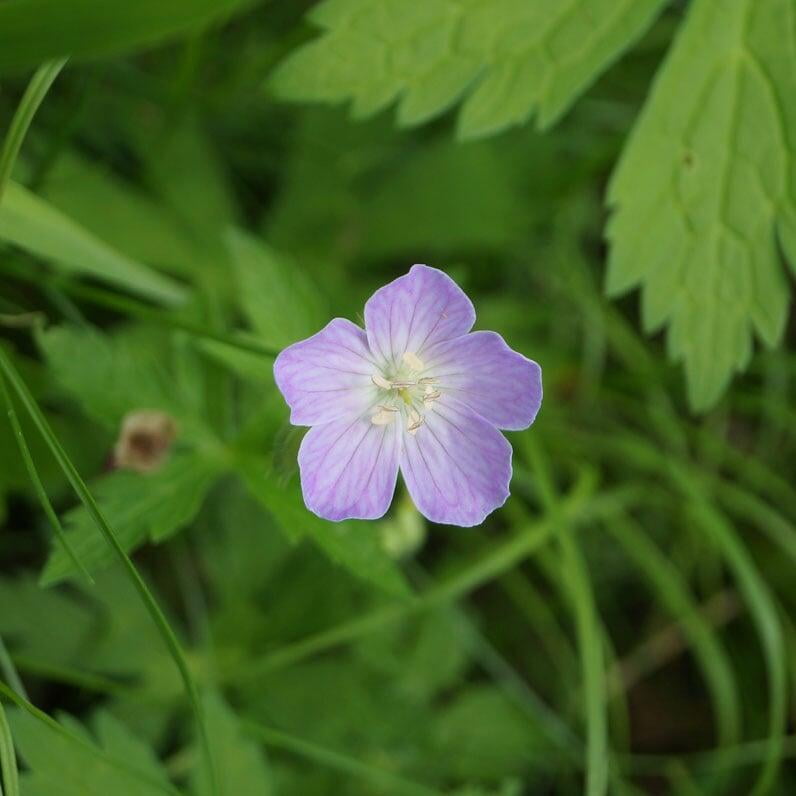Geranium maculatum
Wild geranium Description:
Geranium maculatum, commonly known as wild geranium, spotted geranium, or woodland geranium, is a native herbaceous perennial plant in the Geraniaceae family. It is widely distributed across eastern North America, from Canada to the southeastern United States.
The plant typically grows to a height of about 1 to 2 feet (30 to 60 cm) and spreads to a width of 1 to 2 feet (30 to 60 cm). It has palmately divided, deeply lobed leaves that are green, slightly hairy, and up to 6 inches (15 cm) in diameter. In the spring, it produces clusters of five-petaled, pink to purple flowers that are 1 to 1.5 inches (2.5 to 4 cm) in diameter. The flowers have a distinctively long, pointed beak-like structure, which gives the plant its common name of cranesbill.
Geranium maculatum is a hardy and easy-to-grow plant that prefers partial to full shade and moist, well-drained soil. It is commonly used in woodland gardens, native plant gardens, and naturalistic landscapes. In addition to its ornamental value, it is also valued for its medicinal properties, as the roots have astringent and anti-inflammatory properties and have been traditionally used to treat a variety of ailments.
Native Range:
Wild geranium grows natively from from North Dakota all the way to Florida and up the Eastern coast of the United States. It is found more commonly in the central to Northern states in this region.
Standard Plant Information:
Plant Height: 1' - 2'
Bloom Time: May - June
Preferred Habitat: Does well in part shade to full shade. Often found in woods and woodland edges.
Sowing:
For most homeowners, the best option is to scatter seed on the ground by hand broadcasting at a minimum of 16-64 pls ounces per acre. For even coverage, we recommend that you broadcast seed in perpendicular rows across the site to ensure even coverage.
You’ll want to broadcast any grass seed first, which will get raked into the soil lightly. Next, it is ideal to mulch the area lightly with either a clean (no seed) straw or preferably with our native Little Bluestem straw, sold at our retail garden centers. After a light mulching is complete, now it’s time to broadcast your native wildflower seeds, which should not be raked into the soil. A good rain or watering is sufficient to cover the seed.
Planting:
Simply dig a hole in the soil slightly larger than the plant’s roots. Ensure that the soil line of the plant is maintained during the transfer (i.e. the plant should be at the same level with the ground as it was in the pot). Pack any loose dirt back around the plant and make sure you water it well the same day to ensure it has the best chance of survival.










